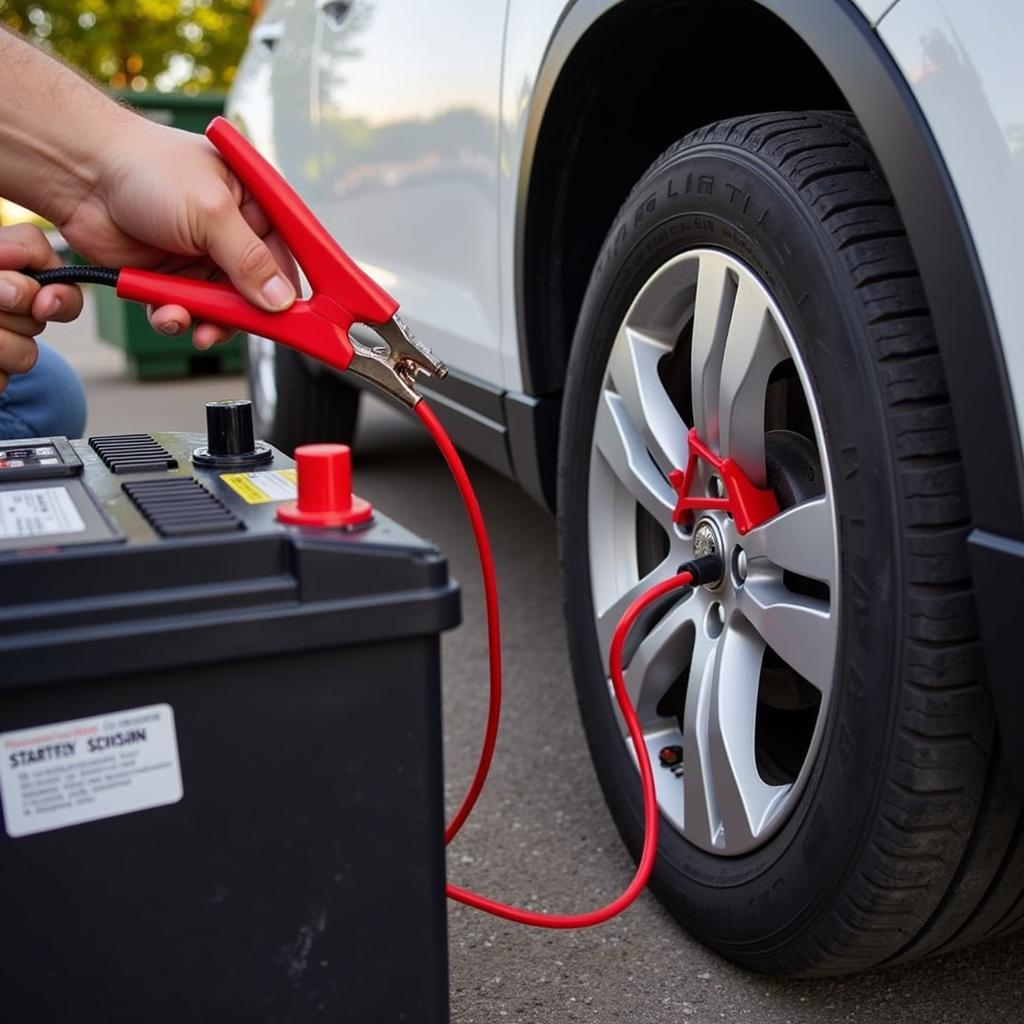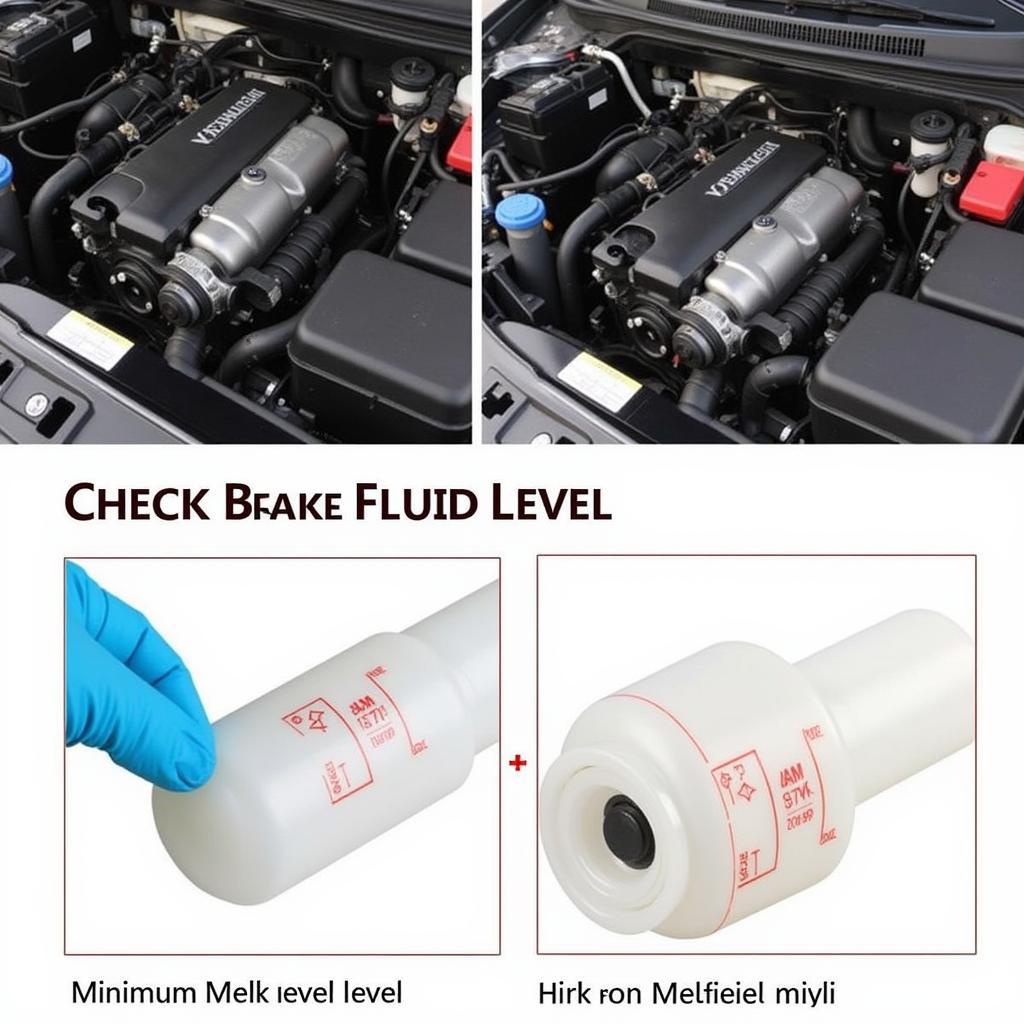A parasitic drain in your car is like a silent thief, slowly draining your battery’s life even when the engine is off. This can lead to a dead battery, leaving you stranded and frustrated. Understanding what causes a parasitic drain and how to diagnose it is crucial for every car owner.
Similar to a battery dies quickly car, a parasitic draw can leave you with a dead battery seemingly out of nowhere. This article will explore the common causes, diagnostic procedures, and solutions for this often-elusive problem. We’ll delve into the intricacies of electrical systems and equip you with the knowledge to tackle this issue effectively, whether you’re a seasoned DIYer or prefer to leave it to the professionals.
What is a Parasitic Drain?
A parasitic drain, also known as a parasitic draw, occurs when a component in your vehicle continues to draw power from the battery even after the ignition is turned off and the car is locked. This slow but steady drain can eventually deplete the battery, preventing the car from starting. While some current draw is normal for functions like the clock, alarm system, and computer memory, a parasitic drain is excessive and abnormal.
Common Causes of a Parasitic Drain
Several components can contribute to a parasitic drain. These include:
- Faulty alternator: A malfunctioning alternator can overcharge the battery and cause excessive drain.
- Interior lights: A dome light or glove box light left on, or a faulty door switch that prevents the lights from turning off, can drain the battery overnight.
- Aftermarket accessories: Improperly installed or malfunctioning aftermarket accessories, such as stereo systems, alarms, and GPS trackers, can be significant culprits.
- Faulty relays and fuses: A stuck relay or a short circuit can cause a continuous draw on the battery.
- Bad ground connections: A corroded or loose ground connection can create a pathway for electricity to leak.
- Glove box light: Often overlooked, the glove box light can stay on if the switch is faulty or the door isn’t fully closed.
How to Diagnose a Parasitic Battery Drain
Diagnosing a parasitic drain requires a methodical approach. Here’s a step-by-step guide:
- Gather your tools: You’ll need a multimeter, a test light, and potentially a wiring diagram for your specific vehicle.
- Prepare the vehicle: Ensure the engine is off, all accessories are turned off, and the doors are closed.
- Disconnect the negative battery cable: This is essential to prevent any electrical shocks.
- Connect the multimeter: Set the multimeter to the DC amps setting and connect it in series between the negative battery terminal and the negative battery cable.
- Measure the current draw: The reading should be very low, typically less than 50 milliamps. A significantly higher reading indicates a parasitic drain.
- Isolate the culprit: Begin removing fuses one at a time, observing the multimeter reading after each removal. A significant drop in the reading indicates the circuit with the parasitic drain.
- Narrow down the problem: Once you’ve identified the circuit, inspect the components within that circuit for faults.
How Much Battery Drain is Normal?
A healthy car battery should have a parasitic drain of no more than 50 milliamps. Anything higher indicates a problem that needs addressing. Knowing how to diagnose parasitic battery drain is essential for maintaining the health of your vehicle’s electrical system.
What if My Car Won’t Start?
If your car won’t start due to a dead battery, first determine if a parasitic drain is the culprit. If you’ve experienced similar situations before, where your battery dies quickly car, a parasitic drain could be a recurring problem. Once you’ve identified the source of the drain, you can take steps to fix it, which may include replacing a faulty component, repairing a wiring issue, or simply ensuring that all accessories are turned off.
 Jump Starting a Car with a Dead Battery
Jump Starting a Car with a Dead Battery
Remote Diagnosis and Programming: The Future of Car Repair
With the advancement of technology, remote diagnosis and programming are becoming increasingly prevalent in the automotive industry. This allows qualified technicians to access a vehicle’s computer system remotely, diagnose problems, and even reprogram certain modules without needing physical access to the car. This technology can be particularly helpful in diagnosing and addressing parasitic drains. This is particularly helpful if your Kona Electric 12v battery dead and you need remote assistance.
Conclusion
A parasitic drain in your car can be a frustrating and inconvenient problem. By understanding the common causes, learning how to diagnose the issue, and considering the benefits of remote diagnostic services, you can take proactive steps to ensure your car starts reliably every time. If you’re unsure about performing the diagnosis yourself, or if the issue persists, it’s always best to consult a qualified automotive technician. Don’t let a parasitic drain leave you stranded – take control and keep your car’s electrical system healthy.
FAQ
- What is the normal current draw for a car battery with the ignition off? Typically, it should be less than 50 milliamps.
- Can a faulty alternator cause a parasitic drain? Yes, a malfunctioning alternator can overcharge the battery and contribute to a drain.
- What tools do I need to diagnose a parasitic drain? A multimeter, a test light, and potentially a wiring diagram for your car.
- What should I do if I find a high current draw? Systematically isolate the circuit causing the drain by removing fuses one at a time.
- Can remote diagnostics help with a parasitic drain? Yes, remote diagnostics can help identify and sometimes even resolve the issue without physical access to the vehicle.
- What should I do if I can’t find the source of the drain? Consult a qualified automotive technician for professional assistance.
- Is it dangerous to diagnose a parasitic drain myself? If you’re not comfortable working with electrical systems, it’s best to leave it to a professional. Always disconnect the negative battery cable before starting any diagnostic work.

